Here are 20 companion plants for Parsley to help your herbs thrive. Parsley also known as garden parsley (Petroselinum crispum), is a flowering plant and a greenish biennial plant that grows in temperate regions or an annual herb that grows in tropical and subtropical climates.
It grows as a biennial to form a cluster of tripinnate leaves (10-25 cm) with numerous (1-3 cm) leaflets in the first year and a taproot that serves as a food store over the winter. In the second year, it develops a stem to a height of 75 cm (30 in), with sparser leaves and flat-topped umbels (3–10 cm in diameter) that are covered in many (2 mm in diameter) yellow to yellowish-green flowers.
The curly leaf of Parsley is frequently used as a garnish, and Green Parsley is often used as a garnish too on a variety of foods, including potato dishes, rice dishes, FishFish, lamb, goose, fried chicken, goose, and steaks, as well as meat or vegetable stews. Parsley seeds, which have a stronger parsley taste than leaves, are often used in cooking.
You should know that pregnant women should avoid eating too much Parsley. Normal dietary portions are safe for pregnant women in any case.
Parsley, like other herbs, thrives in a bright location that gets direct sunlight for six to eight hours every day. It can withstand moderate, mild shade. After the risk of spring frosts has gone, You can sow their seeds directly in the ground, where the plants will develop, and then Cover the seeds with an eighth-inch layer of soil.
Even though Parsley has the ability to repel some insect pests, it is also susceptible to some diseases and pests. These diseases include Alternaria Leaf Blight, Cercospora Leaf Blight, Crater Spot, Damping Off, Powdery Mildew, Rust, and others. Common pests that attack Parsley include aphids, armyworms, cutworms, and root-knot nematodes.
And to combat these pests and diseases without spending a lot of money on pesticides, companion planting with certain plants is one of the best ways to go about it. Companion planting Parsley with other plants helps Parsley easily eliminate these pests and diseases.
We will look into Twenty One (21) Good Companion Plants for Parsley and Eight (8) Bad Companion plants for Parsley and the reason why they are classified as Good and bad for Parsley in this article; let us start.
Table of Contents
Good Companion Plants for Parsley
1. Apple Trees

An apple is a fruit that grows on an apple tree (Malus Domestica). Apple trees are grown throughout the globe, and there are over 7,500 identified varieties. Cultivars are developed for different tastes and applications, like eating raw, cooking, and making cider.
Apples are another great plant to grow with Parsley. Because Parsley attracts a predatory wasp called a braconid wasp, which consumes these pests, it repels codling moths that attack the leaves of your apples.
Their larvae consume apples since they cannot devour the tree’s leaves.
They make your apples sickly and contaminated, limiting production after all of your hard work to develop your tree.
This allows you to harvest a healthy crop of apples.
2. Asparagus
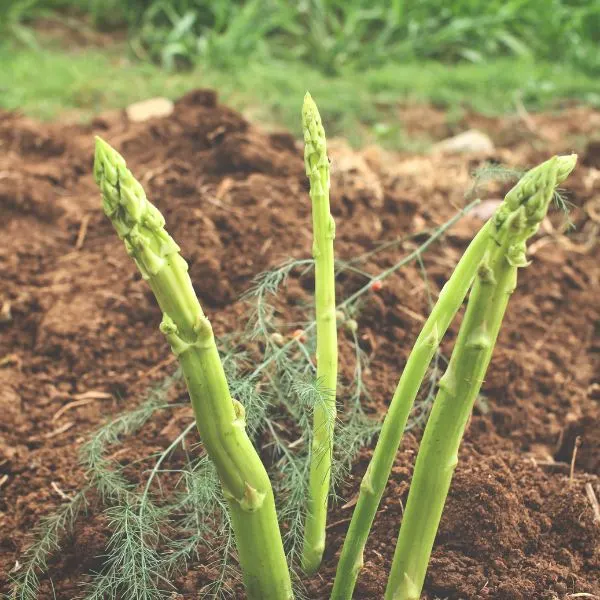
Asparagus, often known as garden asparagus or sparrow grass, is a kind of perennial flowering plant in the genus Asparagus. Its young shoots are eaten as a vegetable in the spring. Only immature asparagus shoots are typically consumed: as the buds begin to expand, and the shoots soon become woody. Starch can also be found in the roots.
Tachinid flies are parasitic and feed on beetles, caterpillars, squash bug nymphs, stink bugs, and fly larvae.
Parsley helps repel asparagus bugs and several other pests.
3. Basil
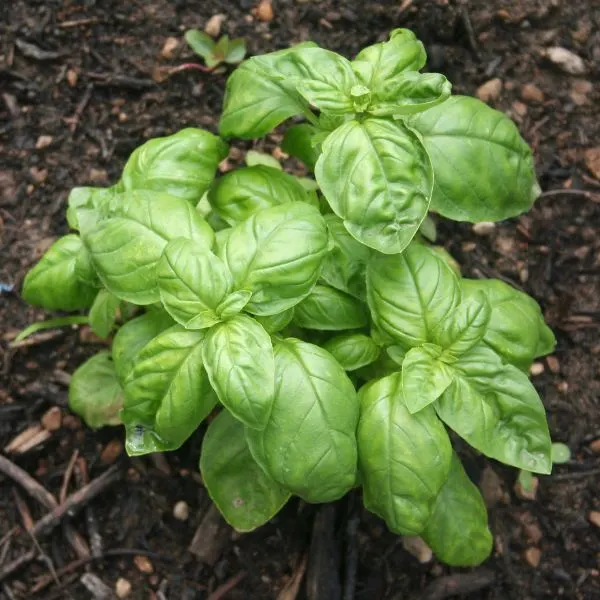
Basil, sometimes known as the great Basil, is a food herb of the Lamiaceae family (mints). It is a delicate plant that is utilized in cuisines all over the globe. Fresh Basil is most typically used in recipes. Cooking rapidly degrades the taste; therefore, it is usually added last.
Parsley, often known as garden parsley, is a flowering plant species in the Apiaceae family.
Parsley is widely used in American cuisine.
Green Parsley is a popular garnish for potato dishes, fried chicken, geese, FishFish, rice dishes, lamb, steaks, and meat or vegetable stews.
Basil and Parsley grow well in comparable soil conditions, and both plants need enough soil moisture to thrive.
Parsley may deter asparagus bugs and worms while enhancing your Basil’s taste.
Furthermore, Basil and Parsley have a stronger effect when planted together as companion plants for other plants such as asparagus and brassicas.
4. Beans
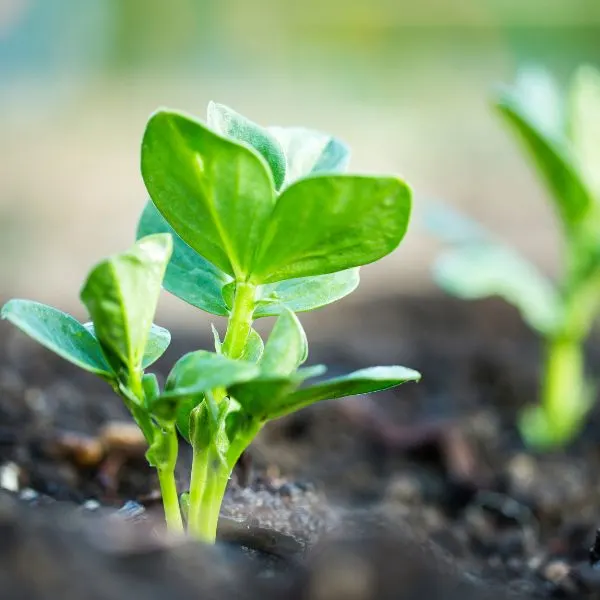
A bean is the seed of numerous plants in the Fabaceae family consumed as vegetables for humans or animals. They may be cooked in various ways, including Frying, boiling, and baking, and are used in various traditional recipes across the globe.
Weevils, aphids, and cutworms may infest beans. The crop benefits from Parsley’s potential to attract beneficial insects that devour these pests, such as tachinid flies.
Because they give nitrogen to the soil, bush and pole bean types and other closely related legumes are excellent companion plants for Parsley.
5. Blueberries

Blueberries are a diverse group of perennial blooming plants with blue or purple berries. Fresh blueberries are available, as well as independently quick frozen (IQF) fruit, purée, juice, and dried or infused berries. These can then be used in a variety of consumer goods, including Pies, Snack foods, jellies, jams, muffins, pancakes, and as a breakfast cereal additive.
Parsley grows well in acidic soils and thus makes an excellent companion. This, combined with the fact that Parsley attracts beneficial insects while repelling pests, makes it an excellent plant to have near blueberries.
6. Broccoli
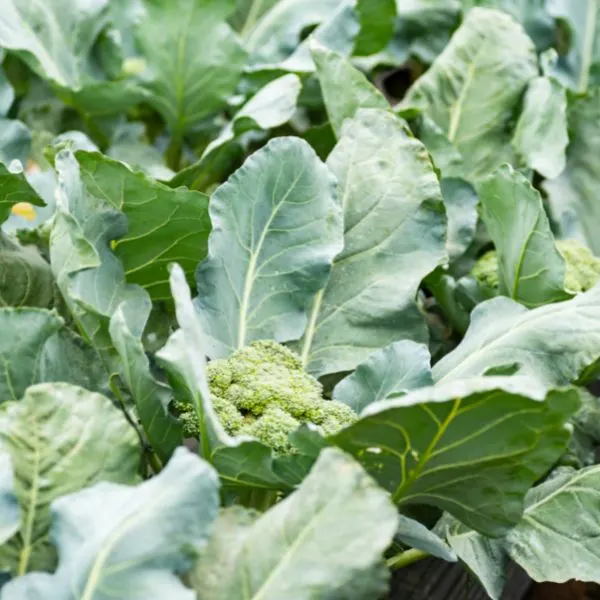
Broccoli is a cabbage family edible green plant with a large flowering head, stalk, and small attached leaves that are eaten as a vegetable. It can be eaten raw or cooked. Broccoli is very rich in vitamin K and vitamin C, both of which are decreased by boiling but retained by steaming, microwaving, or stir-frying.
Cabbage worms and cutworms are pests that can cause significant damage to plants like cabbage, broccoli, Kale, and cauliflower. Parsley is an effective pest repellent that improves the health of your Broccoli plant.
Because Parsley thrives in the sun, it can be grown near your Broccoli plants to provide shade and keep the soil moist during the hottest hours.
7. Cabbage
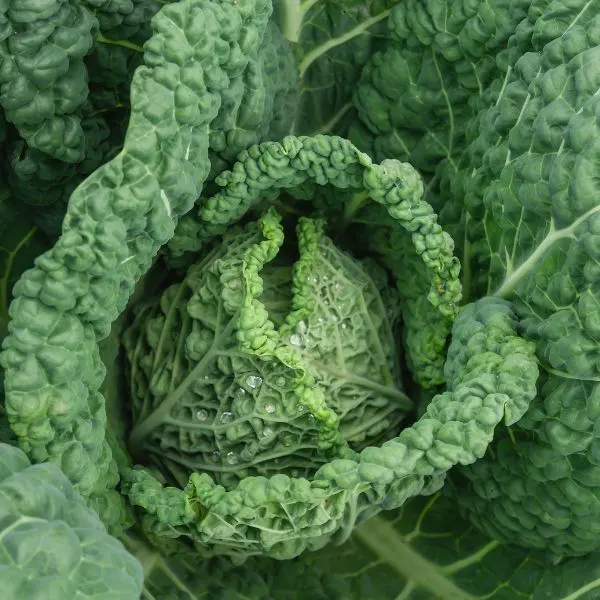
Cabbage is a leafy green, crimson (purple), or white (pale green) biennial plant used as an annual vegetable crop for its thick leaf heads. Raw cabbage contains a lot of vitamin K, vitamin C, and fibre. They may be consumed in a variety of ways, including pickling, steaming, stewing, fermenting, roasting, or uncooked.
Cabbage worms and cutworms are pests that may cause significant damage to plants, including cabbage, broccoli, Kale, and cauliflower. Parsley is a powerful insect repellent that improves the health of your brassica crops.
Because Parsley thrives in the sun, it may be placed alongside brassica plants to give shade and keep the soil wet during the warmest hours.
8. Cauliflower
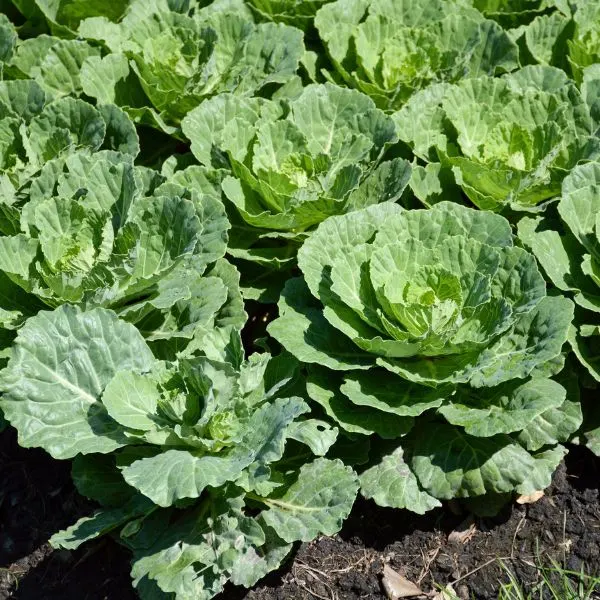
Cauliflower is one of the numerous vegetables in the genus Brassica. It is an annual that reproduces by seed. Typically, just the head – the delicious white meat known as “curd” – is consumed. The leaves are also edible, although they are often discarded.
Cabbage worms and cutworms are two parasites that may cause significant harm to cauliflower. This bug is deterred by Parsley, which improves the health of your cauliflower.
Because Parsley loves the sun, it may be placed near the Cauliflower plant to give shade and keep the soil wet during the warmest hours.
9. Chives

Chives is a flowering plant in the Amaryllidaceae family that produces tasty leaves and blossoms. Close cousins include common onions, garlic, shallots, leeks, and scallions. Chives are a popular herb that may be purchased at grocery shops or grown in home gardens. Salads may benefit from edible blossoms.
Chives are a great herb to pair with Parsley. Parley is a biennial that blooms in its second year. Growing Parsley alongside chives will help to disguise it because chives are very aromatic, attracting pollinators and beneficial insects that feast on many pests that destroy your chives and aid in the pollination process of Parsley.
10. Corn
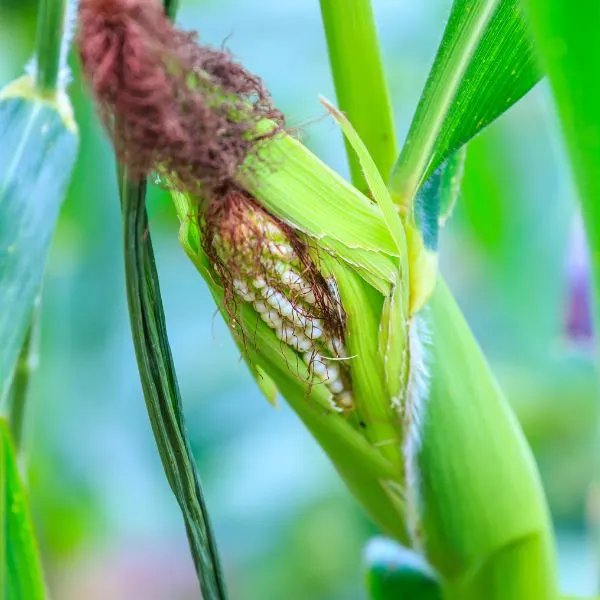
Corn, commonly known as maize, is a cereal grain that indigenous peoples in southern Mexico initially domesticated. Corn is also used to make ethanol, animal feed, and other corn products, including cornstarch and corn syrup.
Many crops, including Parsley, which attracts tachinid flies, benefit from corn as a companion plant. Corn pests include armyworms, cutworms, and corn earworms. Plant parsley alongside your corn crop to combat these insects by acting as a pest repellent and attracting parasitic wasps to feed on the various pests that affect the corn.
11. Dill
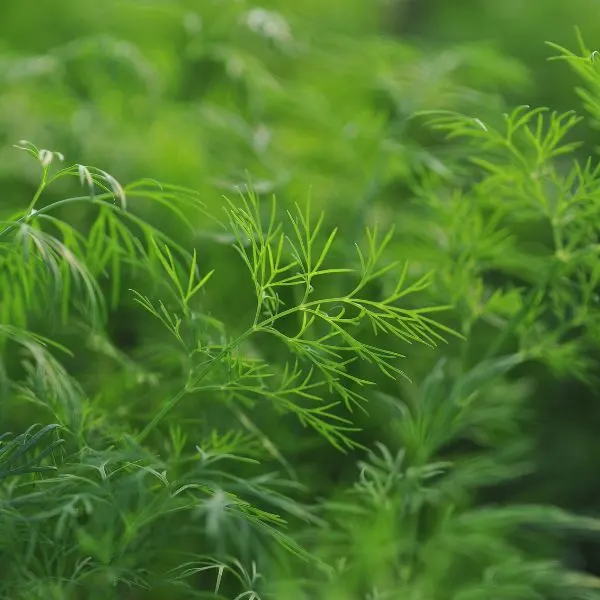
Dill is an annual herb in the Apiaceae family of celery. Dill is best used fresh because it loses flavour quickly when dried. However, freeze-drying dill leaves help to retain their flavor for several months.
French Parsley, also known as chervil, has a more serrated and mini curly leaf structure with a feathery feel, and the plants produce small white flowers.
Its flavor is similar to that of fresh Parsley and tarragon, and it is among the few herbs that can be combined with dill.
Chervil and dill have a mutually beneficial connection in that they both attract predatory insects that prey on harmful pests.
Planting the two together, therefore, shields the plants from any pests.
12. Kale
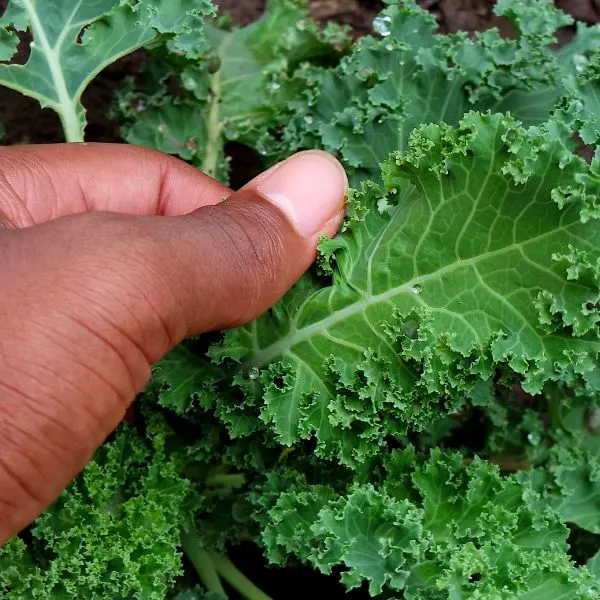
Kale is a cabbage cultivar grown for its edible leaves, though some are used as ornamentals. Kale plants feature green or purple leaves, and the core leaves do not form a head. Flavored “kale chips” have been developed as potato chip replacements.
Cabbage white butterflies spend their entire lives searching for brassica plant eggs. When they hatch, they become cabbageworm caterpillars in the United States. Parsley attracts beneficial insects, which eat these pests. As a result, Parsley is an excellent companion plant for Kale.
13. Pear Trees
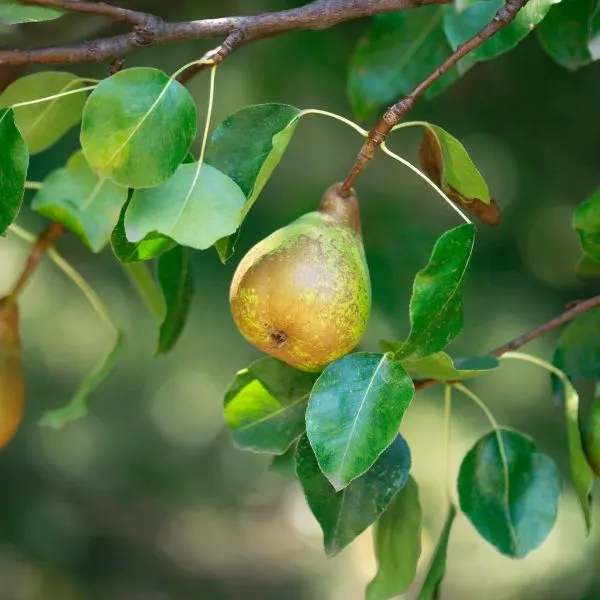
Pears are fruits that grow on trees and are produced and consumed all over the world. The fruit is eaten fresh, tinned, in the form of juice, or when dried. The juice is also commonly used in jellies and jams, usually in conjunction with other fruits such as berries. Perry or pear cider is made from fermented pear juice, and cider is produced from apples.
Pears face similar pest problems as apples. As a result, they require Parsley to grow effectively.
On the other hand, Braconid wasps are attracted to parsley blossoms and eat up the codling moths that are mostly found on pear trees, so planting Parsley next to your pear tree will keep these moths at bay.
14. Peppers
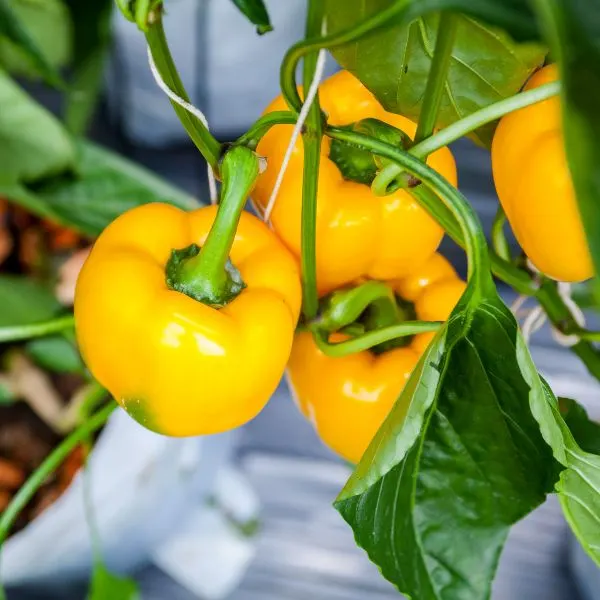
The bell pepper is the fruit of Capsicum annual plants in the Grossum Group.
The plant’s cultivars produce fruits in a variety of colors, including red, yellow, green, candy cane striped, white, orange, chocolate, and purple. Bell peppers are sometimes classified as “sweet peppers” along with less pungent chili varieties. While they are technically fruits (berries), they are widely used as a side dish and vegetable ingredient.
Because of their taste and scent, peppers naturally repel most pests. On the other hand, aphids and beetles may occasionally find their way around and infest the crop.
Predators that feed on aphids and beetles that devour your plants are attracted to Parsley. Maintaining a parsley patch alongside your crops can tackle many issues that peppers cannot manage on their own.
15. Potatoes
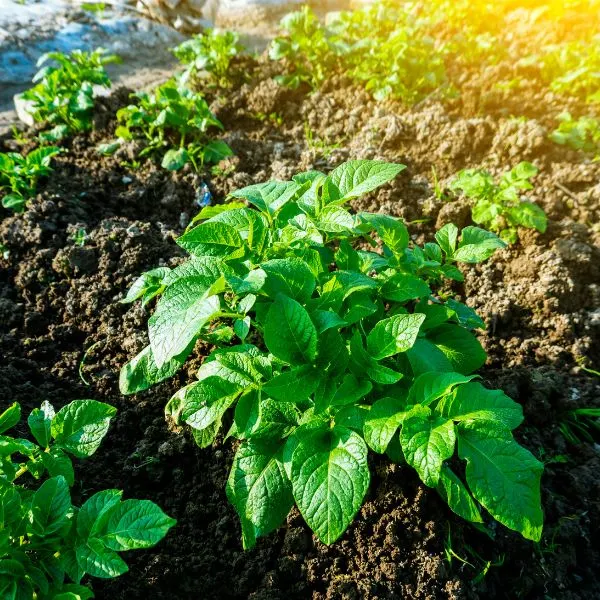
The potato is a starchy tuber, also a root vegetable of the plant Solanum tuberosum, that is native to the Americas. The plant is a perennial of the nightshade Solanaceae family. Potatoes may be cooked in a variety of ways, including skin-on or peeled, whole or sliced up, with or without spices. Most potato meals are served hot, although others, such as potato salad and potato chips, are cooked first and then served cold (crisps).
Another herb that thrives in the damp soil surrounding potato plants is Parsley. It attracts beneficial insects and serves as a trap crop for insects that consume potato plants (same as tomato plants and other members of the same family).
Parsley repels pests such as aphids, spider mites, armyworms, earworms, and beetles, making it an ideal partner for potato plants. It’s also a staple in many potato salad recipes, so it makes a wonderful small potato salad section of the garden.
16. Radish
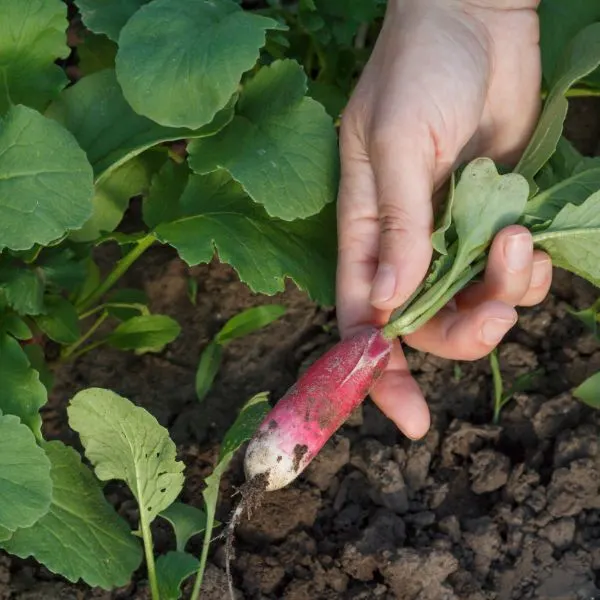
The Radish is a culinary root vegetable of the Brassicaceae family. It is farmed and consumed all over the globe, mostly as a crisp salad vegetable with a pungent, somewhat spicy taste that varies in strength depending on its growing region. There are several types, each with its own size, taste, color, and maturation period.
Chervil is sometimes known as French Parsley. It is one of the members of the Parsley family. If you’ve ever grown Parsley in your garden, you’ll know how much it improves the taste of your plants or meals. Chervil will behave the same when planted alongside Radish. When planted with Radish, it repels pests. A curled leaf distinguishes it. It may be eaten both fresh and dried.
17. Roses

A rose is a woody perennial blooming plant of the genus Rosa in the Rosaceae family. There are hundreds of species and thousands of cultivars. Roses are primarily recognized as attractive plants planted in gardens and occasionally inside for their blossoms.
Sawflies are pests that may harm the beauty and production of this lovely bloom. Planting parsley beside the roses is an efficient strategy to keep sawflies at bay. Not only does Parsley keep pests at bay, but it also improves the aroma of the flowers.
Tachinid flies and hoverflies, which feed on sawflies and aphids, are drawn to Parsley. This plant deters rose bugs from infesting and eating the blossoms when cultivated near roses.
18. Sage
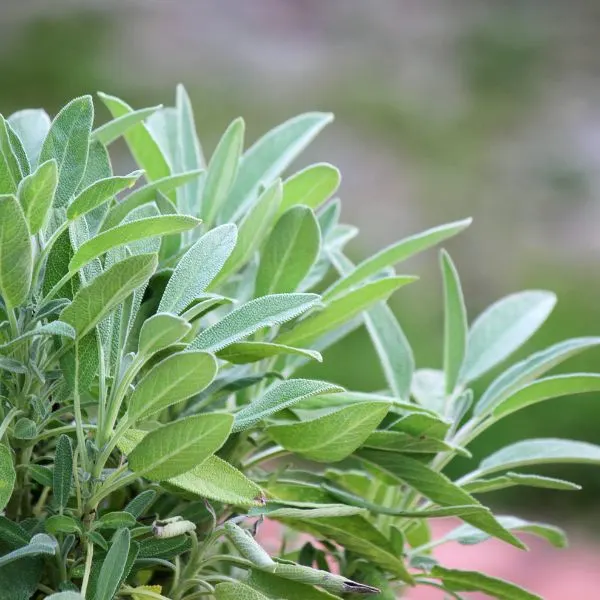
Sage is a woody-stemmed perennial evergreen subshrub with gray leaves and blue to violet blooms. It belongs to the same family as mint and has been known for a long time for its medicinal and culinary use, and it is now utilized as a decorative garden plant.
In the garden, Parsley is an excellent companion plant for your sage. It is a blooming plant native to the Mediterranean that is also known as Parsley. It is largely grown for its medicinal and culinary properties.
Both plants have no negative impact on one another. Because they have identical care needs and growing circumstances, caring for both of them at the same time is simple. You should not be concerned if you set them near each other.
Apart from the fact that both of these plants grow well together, sage benefits from having Parsley surrounding it while it develops. Sage also benefits from the parsley plant’s pollination characteristics and abilities.
19. Tomatoes
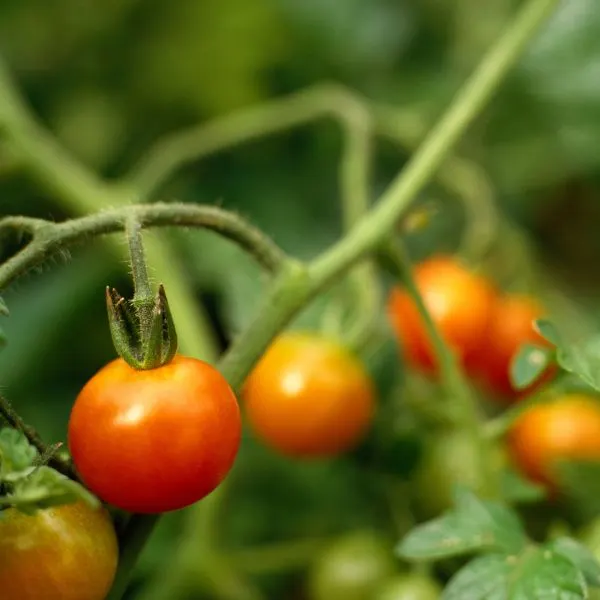
Tomatoes are the edible berries of the plant Solanum Lycopersicum, often known as the tomato plant. They are eaten raw or cooked in a variety of cuisines, sauces, salads, and beverages and are widely used as a vegetable component or side dish.
Typically, parsley plants are utilized as traps to draw pests away from tomatoes. Aside from that, it deters aphids, which are major pests. Hoverflies near parsley plants help tomato plants stay healthy by eating these aphids.
However, not all tomato species do well with Parsley. As a result, you should do some research before growing tomatoes with Parsley.
The combination of Parsley and wild tomato species repels certain insects.
20. Zucchini
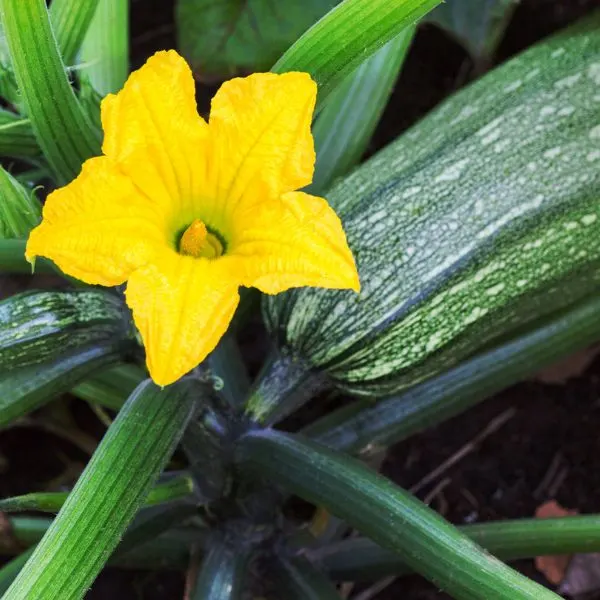
Zucchini, sometimes known as baby marrow, is a vining herbaceous plant whose fruit is plucked when the immature seeds and epicarp (rind) are still tender and tasty. Cooked zucchini is often offered. It may be cooked in a number of ways, including boiled, steamed, grilled, filled and baked, barbecued, fried, or integrated into other cuisines.
Vegetables aren’t the only suitable companion for zucchini; Parsley is a pungent herb that repels pests and insects from the plant. However, when growing various species together, consider an acre. Parsley is a flavorful and easy-to-grow herb, and growing it with parsley yields a plentiful supply from both plants.
Bad Companion Plants For Parsley
1. Carrots
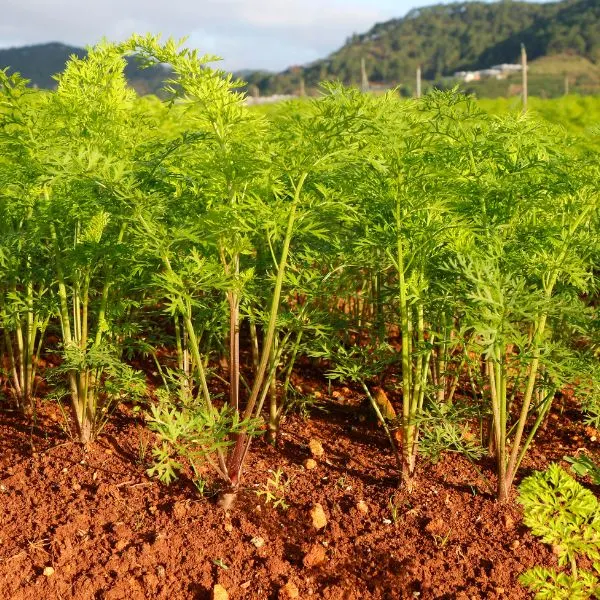
Since carrots and Parsley are members of the same family, they are likely to compete for nutrients.
Another issue with growing carrots alongside Parsley is that they may cross-pollinate, which can be problematic if you want to keep your seeds.
Additionally, both plants attract a similar type of bug, which could be better for an excellent garden.
2. Chamomile
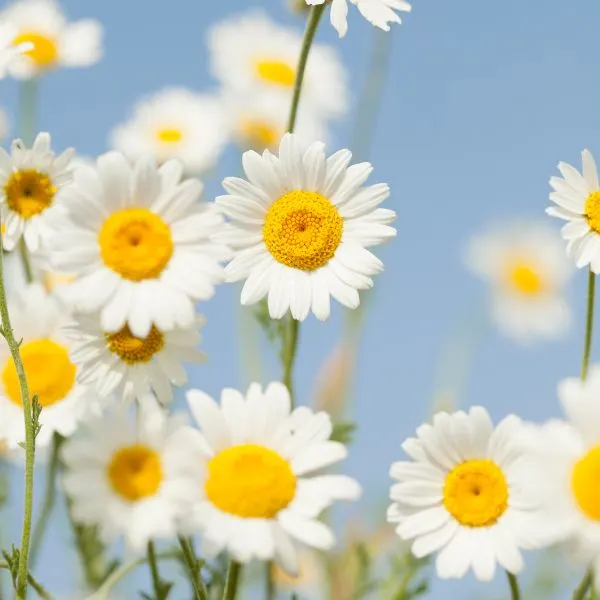
Pests are drawn to Parsley in the same way as carrots are. This may be a problem since it acts as a beacon to hazardous pests when many plants enjoy growing together in one place. This will make your chamomile prone to these pests, and will affect the growth and yield of the plant in the long run.
3. Celery
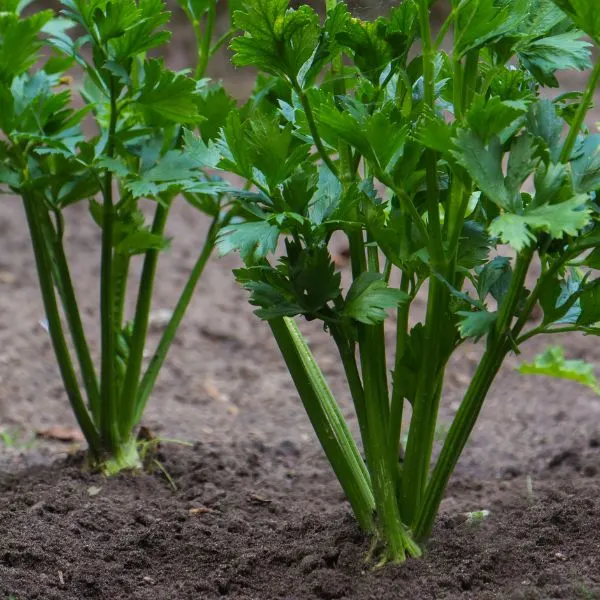
Parsley’s tendency to attract pests might pose problems for celery when it is grown nearby.
When growing celery, keep it separate and far away from Parsley since they will inhibit each other’s development and are troublesome together.
4. Garlic
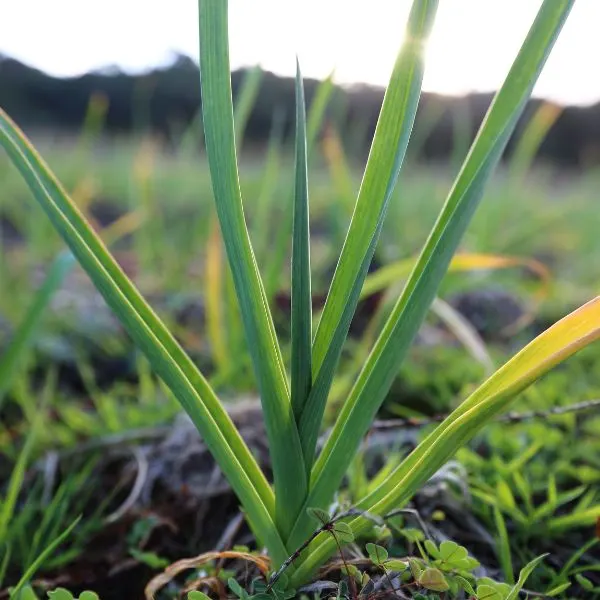
When planted alongside each other in the garden, Parsley is believed to hinder the development of garlic.
There is also competition for soil resources, which reduces garlic output and growth. As a result, garlic is an unsuitable partner for Parsley.
5. Lettuce
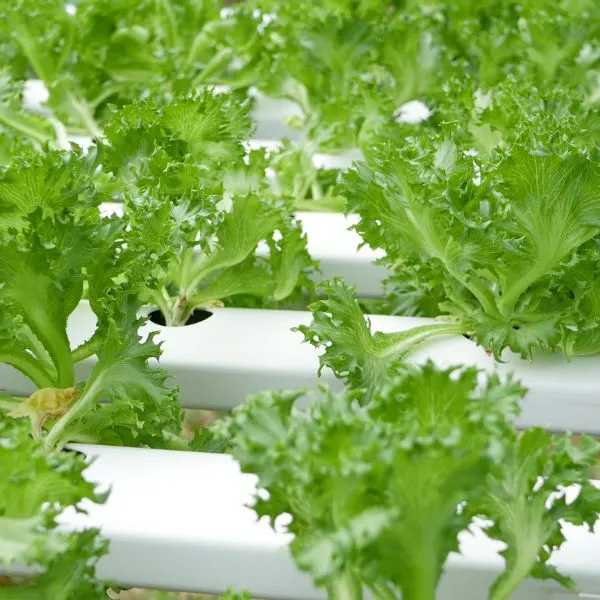
Lettuce also is a crop that should not be grown with Parsley. They do not get along. Parsley may cause lettuce to bolt (go to seed) too early in the growing season, and it naturally attracts hoverflies that lettuce repels.
As the Parsley develops, it might choke out the lettuce.
6. Mint
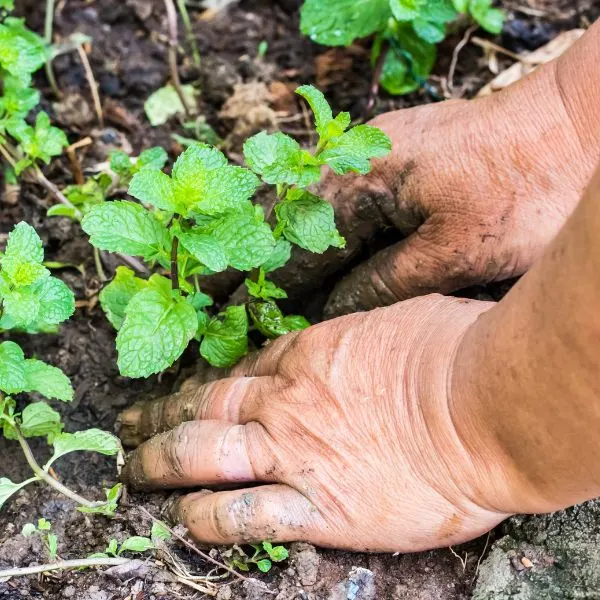
Mint and Parsley belong to the same family and do not grow well together; i.e., if planted next to each other, mint and Parsley suffer. This contains all mint family members. A mint plant’s root can quickly take over the living area of a parsley plant; therefore, they don’t get along. Mint is often cultivated in its own distinct container, which is the best approach to maintaining these plants as separate as possible.
7. Onions
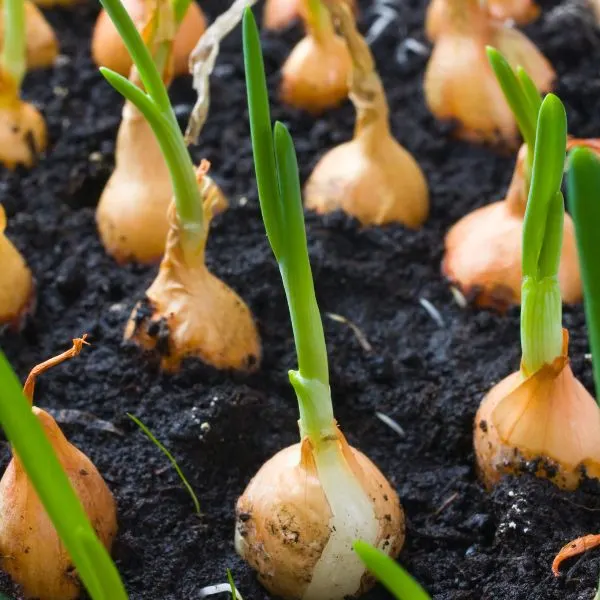
Apart from chives, alliums are known to impede parsley development. Onions are one of these alliums. Planting them together but not in the same pot is the only way to have both in the garden without one affecting the other.
8. Thyme
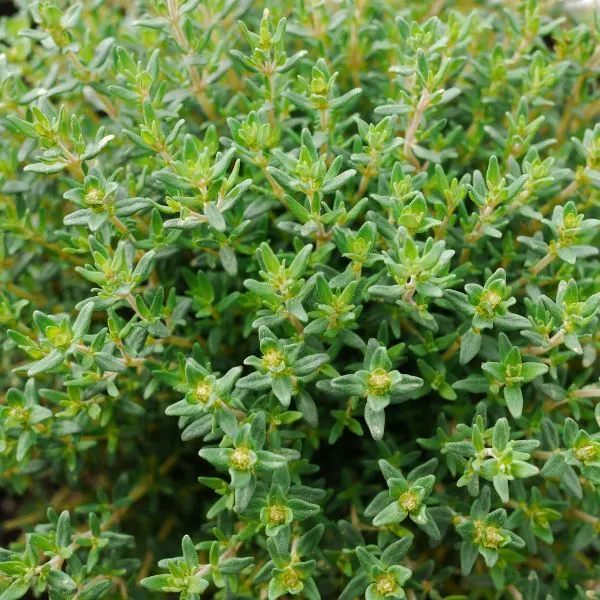
Thyme needs drier soil; thus, pairing it with Parsley would be ineffective since they favor different conditions. Plant them in separate pots and place them close together. This allows you to regulate the soil conditions for each plant better.
FAQs
Does Parsley grow better in pots or ground?
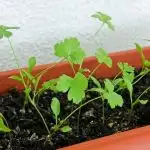
Parsley looks great in any container and may be planted in a little pot, a big patio planter, or combined into a window box. However, because of their deep taproots, they need some container depth – use containers that are at least 12 inches deep for the most robust performance.
Should Parsley be cut back for winter?
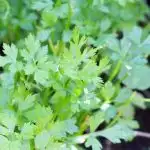
So, how do you take care of Parsley throughout the winter? Cut the plants back in the early autumn and mulch them with 2 to 3 inches (5-8 cm) of mulch. In the winter, the mulch prevents the earth from freezing and thawing.
What grows good with parsley?
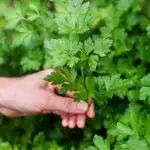
Parsley is a versatile herb that can be planted with a variety of other plants including tomatoes, asparagus, corn, carrots, and more.
Are rosemary and parsley companion plants?
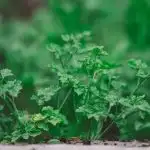
Rosemary and parsley can be grown together, but they have different light, soil and water requirements, so it isn’t the best herb to choose to plant alongside parsley.
Are basil and parsley companion plants?
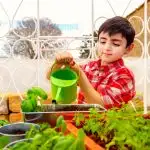
Basil and Parsley grow well in comparable soil conditions, and both plants need enough soil moisture to thrive.
Can you plant tomatoes and parsley together?
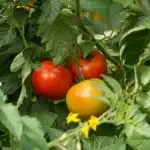
In general tomatoes go well with Parsley, but not all types of tomatoes pair well with it. Make sure to look into the light, water, and soil requirements for the type of tomato you want to plant alongside parsley.
What flowers can i plant with parsley?
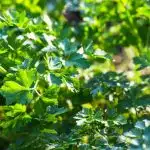
Parsley can be planted with flowers like the following: calendula, nasturtium, marigolds, alyssums, borage and more.
Can parsley and strawberries grow together?
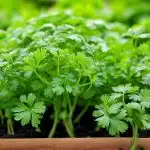
Parsley and strawberries have different requirements season wise, so technically they cannot be grown together at the same time.
CONCLUSION
Parsley, often known as garden parsley (Petroselinum crispum), is a flowering plant in the Apiaceae family. And in this article, we were able to look into Twenty 0ne (21) Good Companion plants for Parsley and Bad Companion plants for Parsley.
Parsley is low in calories yet high in nutrients, including vitamins A, K, and C. Parsley is also high in vitamin K, a substance that promotes bone and heart health. The amount of vitamin K in only two tablespoons (8 grams) of Parsley is more than what you need for the whole day.
It also contains the minerals calcium, iron, magnesium, and potassium. With all of these nutrients, it may help improve blood sugar, heart health, bone health, immunity, liver health, and kidney health.
Choosing a location with full sun (6+ hours of sunshine) and well-draining soil rich in organic matter is one of the conditions that allow Parsley to grow effectively. The soil’s pH should ideally be around 6.0, which is slightly acidic.
Choose a weed-free space as well; this will make it easier to notice the Parsley growing. Parsley will grow at temperatures ranging from 40 to 90 degrees Fahrenheit (5-32C). The ideal temperature is 80F (27C), with a nighttime dip to 68F (20C), and germination will take longer at lower temperatures.
To summarize, Parsley is a multipurpose herb that may be used in various dishes, including egg bakes, sauces, liquids, and garnish. As a result, it is an important plant in your garden.
More companion plant articles
